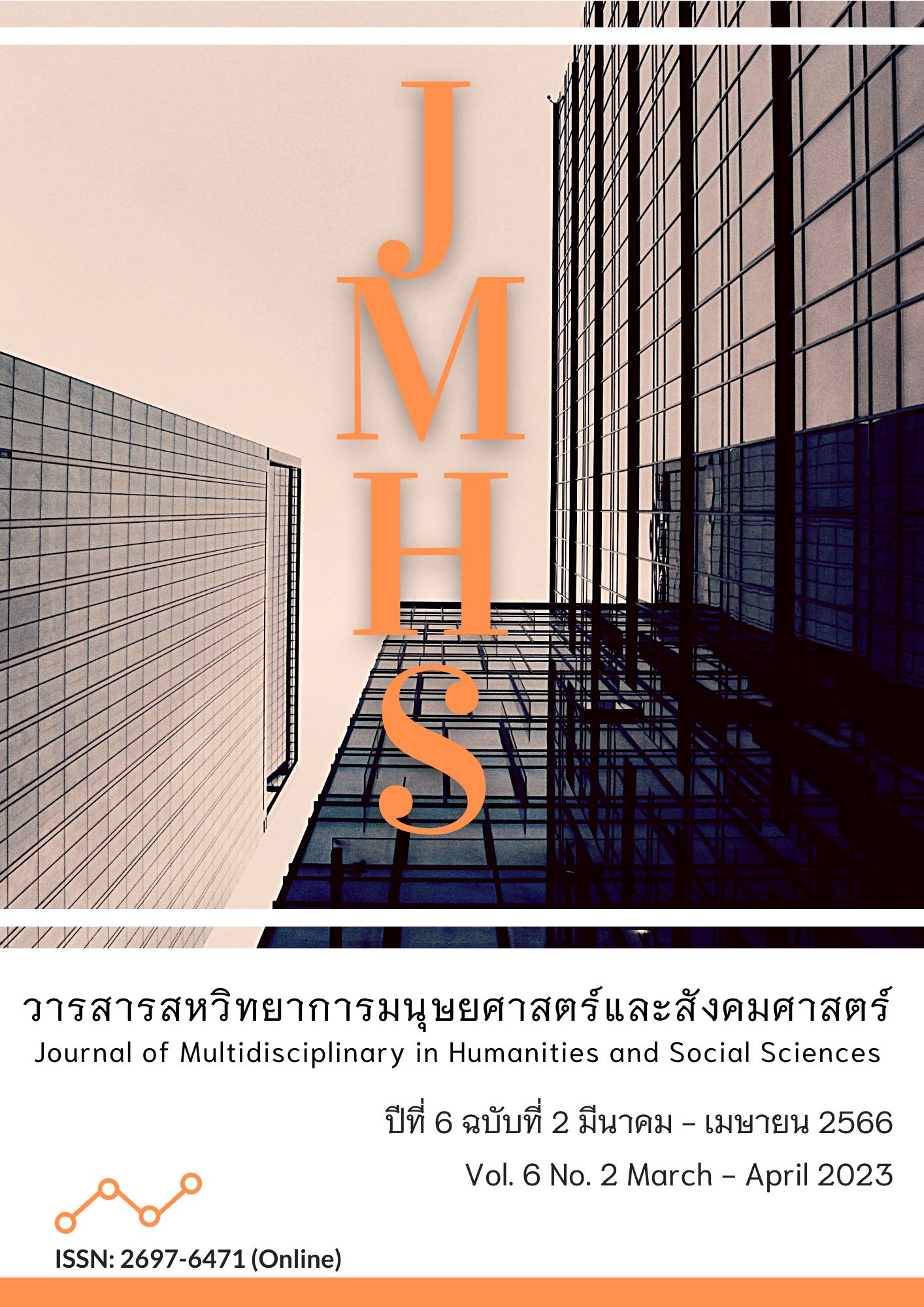Work From Home During the Coronavirus 2019 Pandemic: The Study of Work Engagement of Employees in The Thai Automotive Industry
Main Article Content
Abstract
This article aimed to study employees’ work commitment to work-from-home during the Coronavirus 2019 pandemic and compare the work commitment level of employees’ work-from-home classified by work experience and position during the outbreak of Coronavirus 2019. The study model was quantitative research. The study covered the area in Bangkok and its vicinity. The sample consisted of 400 employees working in automobile manufacturing companies located in Bangkok and the metropolitan area. The sample was selected by multi-stage random sampling. The research tool was a questionnaire with a five-point Likert scale. The data were analyzed using descriptive statistics, percentage, mean, standard deviation, correlation coefficient, and post hoc tests). The research results showed that: 1) employees’ work commitment to work-from-home during the outbreak of the Coronavirus 2019 was at a moderate level; and 2) the comparison of work commitment to work at home among employees in the automotive industry in Thailand found that the average work commitment was significantly different at the.05 level.
Article Details

This work is licensed under a Creative Commons Attribution-NonCommercial-NoDerivatives 4.0 International License.
Views and opinions appearing in the Journal it is the responsibility of the author of the article, and does not constitute the view and responsibility of the editorial team.
References
กรมพัฒนาฝีมือแรงงาน กระทรวงแรงงาน. (2564). จำนวนแรงงาน จำแนกตามภาคอุตสาหกรรมยานยนต์สมัยใหม่. สืบค้นจาก https://www.dsd.go.th
จิรัชญา ศุภโภคา และ ประสพชัย พสุนนท์. (2562). ปัจจัยที่ส่งผลต่อความผูกพันในองค์กรของพนักงานกลุ่มอุตสาหกรรมยานยนต์ในจังหวัดสมุทรปราการ. วารสารบริหารศาสตร์ มหาวิทยาลัยอุบลราชธานี, 8(15), 1-13. สืบค้นจาก https://so03.tci-thaijo.org/index.php/jms_ubu/article/view/107995
สภาอุตสาหกรรมแห่งประเทศไทย. (2565). สถิติกลุ่มอุตสาหกรรมยานยนต์. สืบค้นจาก https://fti.or.th
Ahmed, S., Ahmad, F. B., & Jaaffar, A. R. (2017). Employee Engagement on Employee Relations with Supervisor and Employee Performance Relationship in Developing Economy: Critical Analysis with PLSSEM. Saudi Journal of Business and Management Studies, 2(4), 389-398.
Algabry, L., Alhabshi, S. M., Soualhi, Y., & Alaeddin, O. (2020). Conceptual Framework of Internal Sharīʿah Audit Effectiveness Factors in Islamic Banks. ISRA International Journal of Islamic Finance, 12(2), 171-193. http://dx.doi.org/10.1108/IJIF-09-2018-0097
Bakker, A. B. (2011). An Evidence-Based Model of Work Engagement. Current Directions in Psychological Science, 20(4), 265-269.
Dargahi, N., Katsara, M., Tselios, T., Androutsou, M. E., De Courten, M., Matsoukas, J., & Apostolopoulos, V. (2017). Multiple Sclerosis: Immunopathology and Treatment Update. Brain Sciences, 7(7), 78.
Delistavrou, A., Katrandjiev, H., Sadeh, H. & Tilikidou, I. (2019). Exploring Ethical Consumption in Different Geographical Places. Euro Med Journal of Business, 14(3), 221-238. https://doi.org/10.1108/EMJB-10-2018-0059
Eikhof, D. R. (2007). Introduction: What work? What life? What Balance?. Employee Relation, 29(4), 325-333. https://doi.org/10.1108/01425450710839452
Kotzé, J., van der Westhuizen, S., & Nel, E. (2014). The Relationship Between Employees’ Experience of Performance Management and Work Engagement Within a South African Organisation. Journal of Psychology in Africa, 24(6), 475–479. https://doi.org/10.1080/14330237.2014.997027
Mayangdarastri, S., & Khusna, K. (2020, March 5). Retaining Millennials Engagement and Wellbeing Through Career Path and Development. Retrieved from http://repository.unej.ac.id/handle/123456789/104469
Shuck, B., & Rose, K. (2013). Reframing Employee Engagement Within the Context of Meaning and Purpose: Implications for HRD. Advances in Developing Human Resources, 15(4), 341-355.
Sjöberg, A. (1997). Studies of Work Commitment: Theoretical and Methodological Considerations(Doctoral dissertation). Stockholms University.
Yamane, T. (1973). Statistic: An Introductory Analysis. (3rd ed). New York: Harper & Row.


